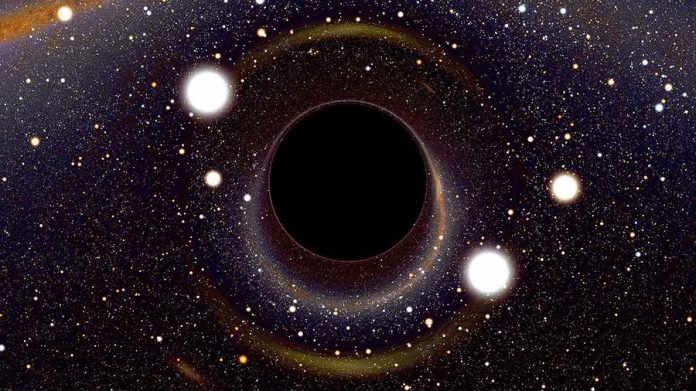Two separate teams of scientists have bent the rules of physics to catch a glimpse of evidence on something which, technically, we shouldn’t be able to perceive: a fourth spatial dimension.
Mikael Rechtsman from Penn State University said: “Physically, we don’t have a 4D spatial system, but we can access 4D quantum Hall physics using this lower-dimensional system because the higher-dimensional system is coded in the complexity of the structure.
“Maybe we can come up with new physics in the higher dimension and then design devices that take advantage the higher-dimensional physics in lower dimensions.”
In layman’s terms, 3D objects cast 2D shadows, so 4D objects should cast 3D shadows even if the 4D object is imperceivable.
The two teams created two custom-designed, two-dimensional experiments to generate an instance of the quantum Hall effect, which restricts the movement of electrons which allows us both to perceive and measure them.
Researchers who studied the effect managed to win the 2016 Nobel Prize for Physics and three Nobel Prizes have been awarded for experimental and theoretical work for the effect.
The effect normally manifests itself in the boundary between two materials, where electrons can only move in two dimensions.
When a magnetic field is produced in a 90-degree line to the 2D plane it changes the behaviour of electrons which flow through it.
This can be further manipulated by reducing the temperature and increasing the voltage within the environment.
The greater the voltage and the larger the field, the more of a role quantum mechanics plays.
The reason for this is that the magnetic field generates a force acting at right angles to the direction of motion – the Lorentz force – which deviates the electrons.
But at low temperatures and very large magnetic fields, quantum mechanics starts playing a role which means the voltage no longer increases continuously but rather jumps in discrete steps.
The European team supercooled atoms close to absolute zero, which were then placed in a 2d lattice created using lasers.
They were then “excited’ using the additional laser to get them moving again.
The US team instead beamed a laser through a block of glass to simulate the effect of an electric field on charged particles.
Michael Lohse, one of the European researchers from the Ludwig-Maximilians University in Germany, said: “I think that the two experiments nicely complement each other.”
The quantum Hall effect can be understood as a topological phenomenon.
An example of Topology describes how many holes an object has and into what other shapes it can be transformed without cutting it.
Similar laws are responsible for the quantum Hall effect for electrons’ only being able to move along topologically well-defined paths.
It was shown mathematically 20 years ago that comparable topological effects should also occur in four spatial dimensions.
Professor at the Institute for Theoretical Physics Oded Zilberberg said: “At the time, however, that was more like science fiction.
“Right now, those experiments are still far from any useful application.”
Physicists can now investigate not just on paper, but also experimentally that phenomena occurring in four or more dimensions can have in our usual three-dimensional world.
Quasicrystals in metallic alloys are one example, which in three dimensions actually exhibit regular patterns.















